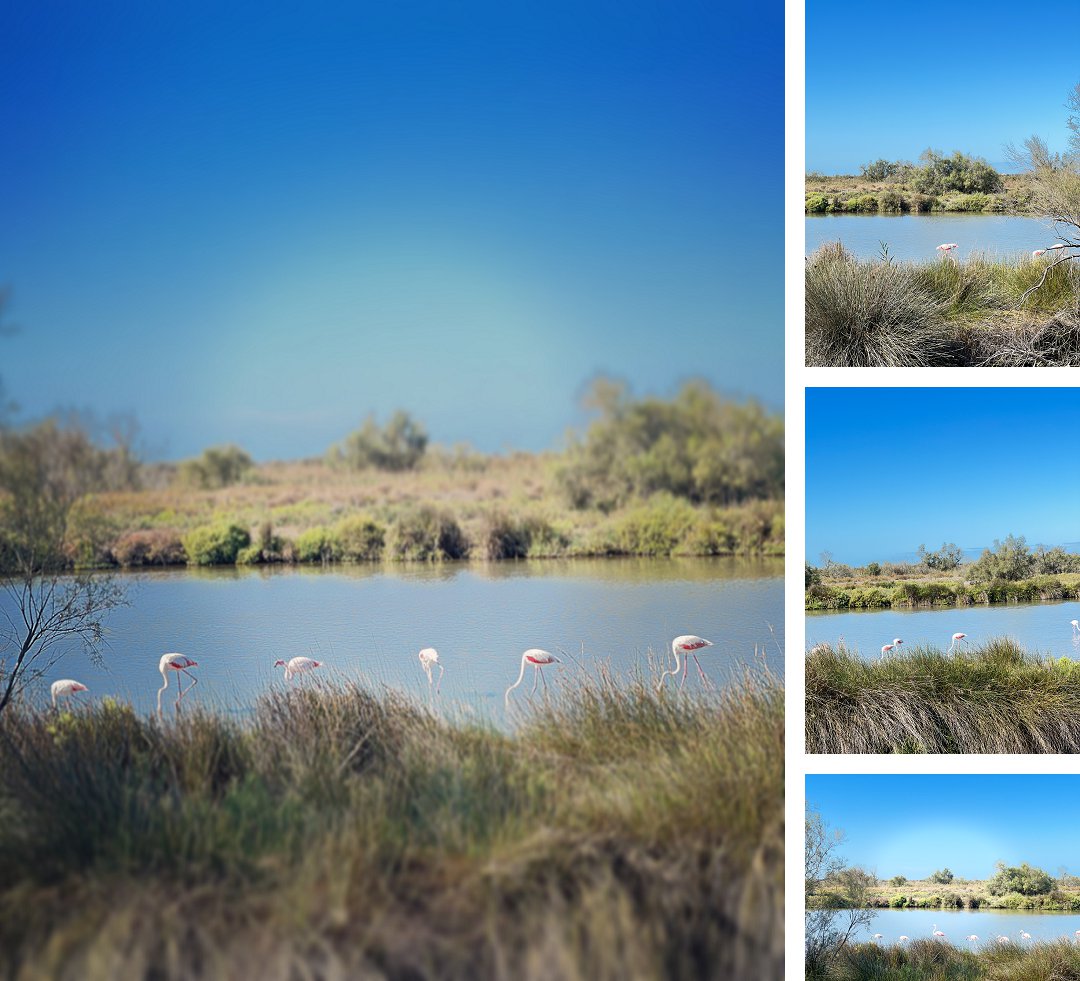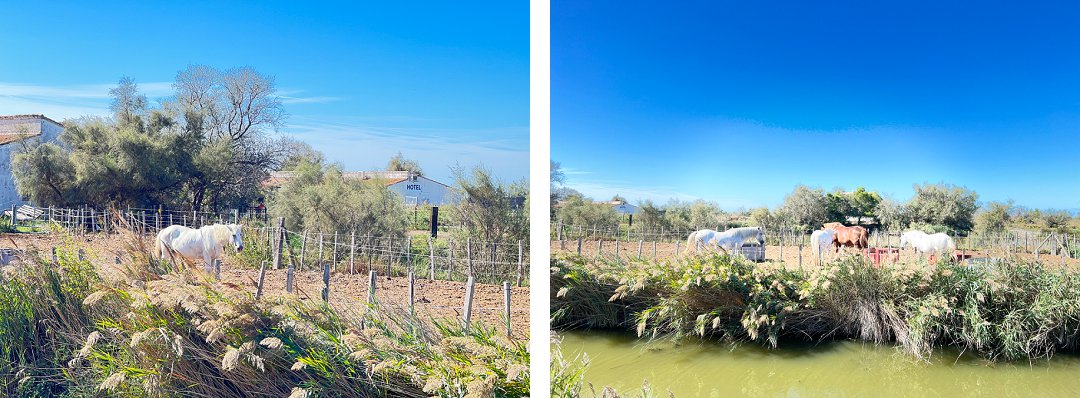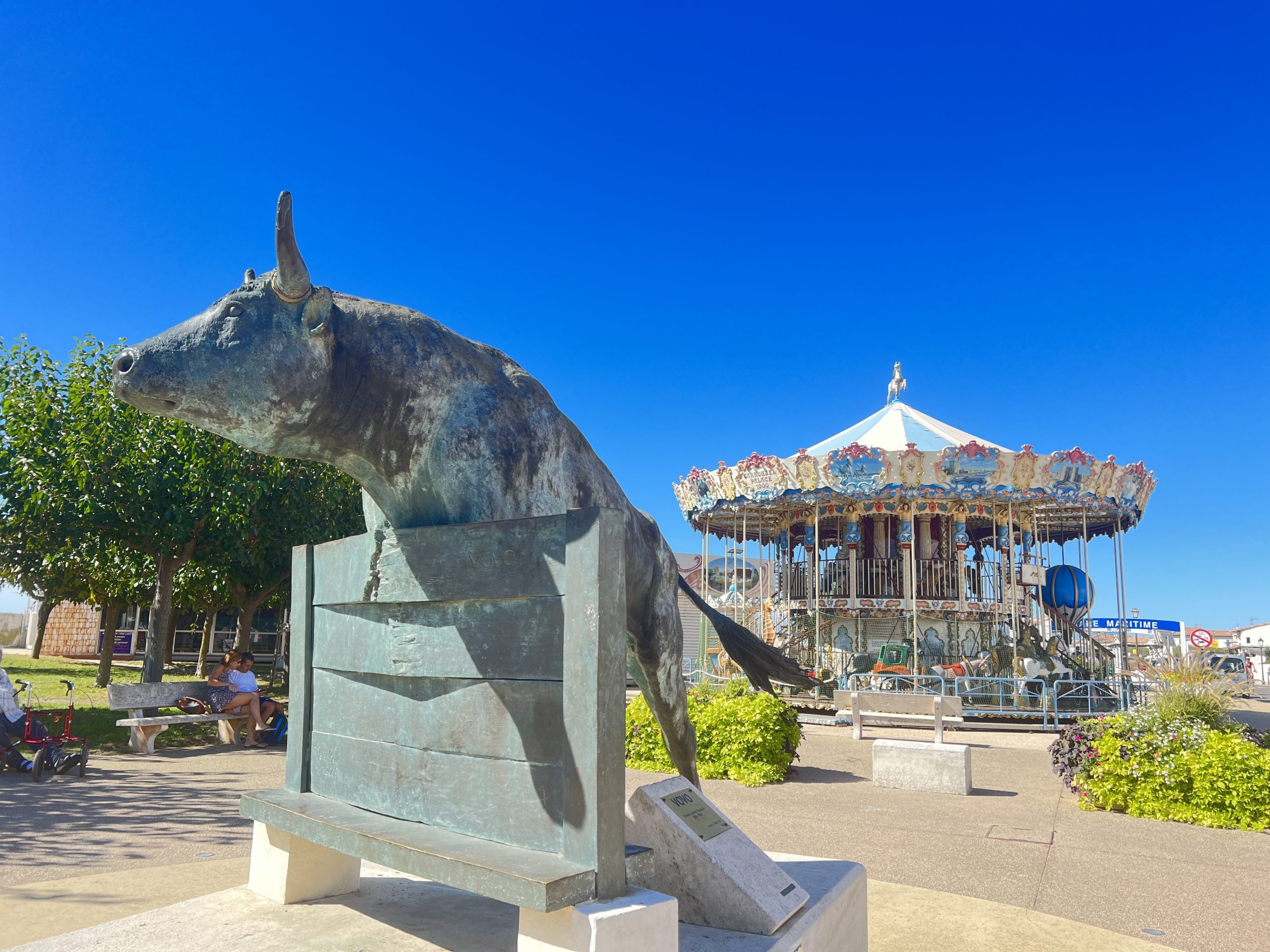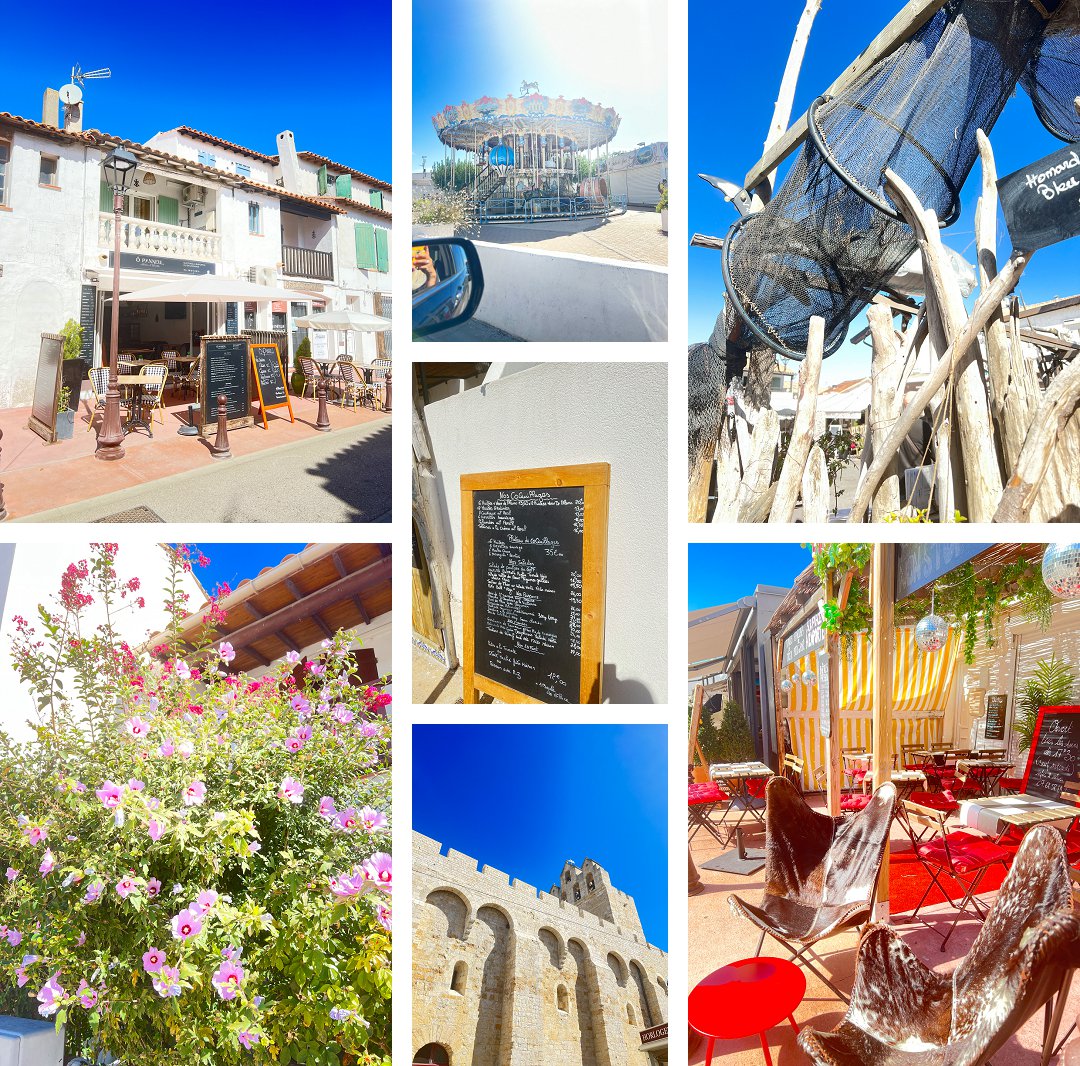
As a child I was really mesmerised by the Camargue. It seemed like a magical, fairy tale place, with white horses frollicking freely on the beach and pink flamingoes, standing serenely in calm waters. Even on the map of France, the Camargue looked like it existed in another-wordly place, almost falling off the edge of the southern coast of France. Into adulthood, it’s been the kind of place I never thought I’d get to see, because, I mean, why on earth would we be holidaying in the south of France?
Fast forward to September 2023, and we were indeed heading off to the South of France. Not to lie on the beaches of Nice or St Tropez, but to check out potential areas for a relocation. Long story, and will be covered elsewhere, but we had an itch we needed to scratch, and so we packed the car, and one Sunday in September, we headed off, via Trieste and Padova before crossing the border into France and doing a week of exploring. One of our stop offs for a night was in Arles, and on checking next morning, we saw that the Camargue area was only 45 minutes away via the D570. So, it had to be done. I was coming for the white horses and pink flamingoes!
The D570 reminded me very much, if you are familiar with it, like the road from Formby to Southport. Once the edges of town are left behind, the road is surrounded by inlets and dunes and tall, towering reeds. And, every now and again – although this bit isn’t like Formby or Southport – glimpses of white horses, in fields, and flamingoes, standing in groups, each on one leg, some upright, some with heads in the water. Because of time constraints, this was as close as we got to horses or flamingoes, but it still gave me goosebumps, to see them pretty up close.


I suppose I hadn’t really expected to find actual towns in this area – I always imagined it was all dunes and marshlands and expansive beaches with rolling waves – but we saw on Google Maps, a church, right on the edge of a headland and decided to explore further, discovering the town of Les Saintes-Maries-de-la-Mer. This beautiful French town owes its name to Saint Mary of Jacob and Saint Mary Salome who, with their servant Sara, are believed to have crossed the sea from Palestine on a boat with no sails or oars. After landing here, the three close followers of Jesus then started spreading the Christian faith, and every year in May, a great pilgrimage of Romani people from all over Europe leads them here to pay homage to their patron saint Sara. We had absolutely no idea that this town existed, but it’s clearly a destination, not only for pilgrims, for tourists, judging by the number of restaurants, bars, independent shops, gorgeous houses converted into accommodation and an arena. Where the bulls are kings, and some are specifically bred for the course camarguaise – Camargue style of bull-fighting. Only here, the bulls are never killed. These bulls are confronted with raseteurs – Camargue bullfighters – who try to remove the ribbon that has been attached between its horns with strings. The bulls are considered so important, that when they die (not from the fights, as they are not killed in the ring), they are often buried in the marshes, and villages erect statues to them. Every self-respecting Camargue village has its bull statue. Just like Saintes-Maries-de-la-Mer.

The town is a perfect seaside town – lots of winding alley ways and roads, packed with the most stylish and elegant eateries and shops, all within walking distance of the imposing church. Horses and flamingoes aren’t in evidence here, but swanky yachts and fishing boats and smaller yachts jostle for space in the harbour. It’s a shame that we couldn’t stay overnight, as we were on a tight schedule, but if we are ever in the South of France again – and we’ve decided that relocating here isn’t an option for us, but holidays most definitely are – we’ll certainly bookmark this wonderful town and explore the Camargue properly.

